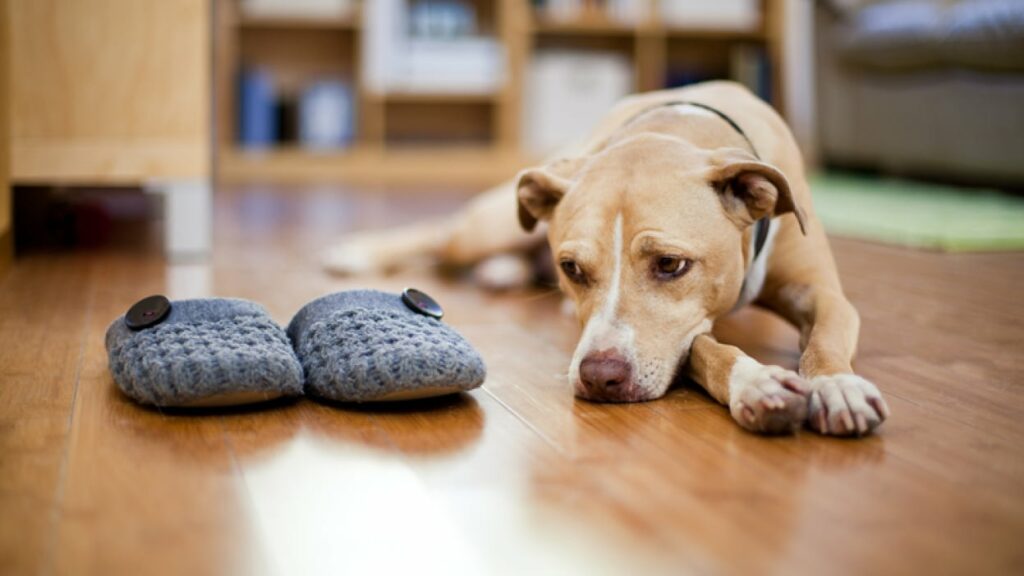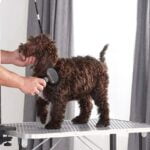Table of Contents
Separation anxiety in pets can be a challenging issue for both the pet and the owner. Pets with separation anxiety may exhibit distressing behaviors when left alone, such as excessive barking, destructive chewing, or inappropriate elimination. Fortunately, there are effective strategies for dealing with separation anxiety in pets. This guide provides ten proven methods to help your furry friend feel more secure and calm when you’re away.

1. Create a Safe Space: Dealing with Separation Anxiety in Pets
Provide your pet with a safe and comfortable space where they can feel secure when you’re not around. This could be a crate, a specific room, or a cozy corner with their favorite bed and toys.
- Tip: Gradually introduce your pet to this space while you are at home, so they associate it with positive experiences. For more tips, visit ASPCA.
2. Practice Gradual Departures and Arrivals
Help your pet get used to being alone by gradually increasing the amount of time you’re away. Start with short absences and slowly increase the duration as your pet becomes more comfortable.
- Tip: Avoid making a big fuss when you leave or return, as this can heighten your pet’s anxiety. For more guidance, check out The Humane Society.
3. Use Interactive Toys and Puzzles: Dealing with Separation Anxiety in Pets
Keep your pet mentally stimulated and distracted by providing interactive toys and puzzle feeders. These can keep them occupied and reduce anxiety while you’re away.
- Tip: Rotate toys to keep your pet engaged and interested. Learn more about suitable toys from PetMD.
4. Establish a Routine
Pets thrive on routine. Establish a consistent daily schedule for feeding, walks, playtime, and rest. A predictable routine can help reduce anxiety by providing structure and security.
- Tip: Stick to the routine as closely as possible, even on weekends and holidays. For more advice, visit Cesar’s Way.
5. Provide Background Noise: Dealing with Separation Anxiety in Pets
Leave a radio, television, or white noise machine on when you leave the house. Background noise can provide comfort and make your pet feel less alone.
- Tip: Choose calming music or nature sounds specifically designed for pets. Check out options recommended by PetMD.
6. Use Calming Products
Consider using calming products such as pheromone diffusers, sprays, or calming collars. These products can help reduce anxiety and create a more relaxed environment for your pet.
- Tip: Introduce these products gradually and monitor your pet’s response. For more information, visit Cornell Feline Health Center.
7. Exercise Before Leaving: Dealing with Separation Anxiety in Pets
Ensure your pet gets plenty of physical exercise before you leave. A tired pet is less likely to be anxious and more likely to rest while you’re away.
- Tip: Include a mix of physical and mental exercise, such as a walk, playtime, and training sessions. For more exercise ideas, visit AKC.
8. Seek Professional Help
If your pet’s separation anxiety is severe, consider seeking help from a professional trainer or a veterinary behaviorist. They can provide personalized strategies and support to address your pet’s specific needs.
- Tip: Look for professionals with experience in treating separation anxiety and positive reinforcement methods. For more tips, visit APDT.
9. Use Technology: Dealing with Separation Anxiety in Pets
Consider using technology such as pet cameras or treat-dispensing devices to monitor and interact with your pet while you’re away. These tools can help you check in on your pet and provide reassurance.
- Tip: Choose devices that allow you to talk to your pet and dispense treats remotely. For product recommendations, visit Wired.
10. Avoid Punishment
Never punish your pet for behaviors related to separation anxiety. Punishment can increase anxiety and worsen the problem. Instead, focus on positive reinforcement and creating a calm environment.
- Tip: Reward your pet for calm behavior and practice patience and consistency in your training. For more guidance, visit PAWS.
Conclusion: Dealing with Separation Anxiety in Pets
By following these strategies for dealing with separation anxiety in pets, you can help your furry friend feel more secure and relaxed when you’re not around. Creating a safe space, maintaining a routine, and using calming products are just a few ways to manage separation anxiety effectively. With patience and consistency, you can improve your pet’s well-being and reduce their anxiety. For more tips on pet care and behavior, visit our website.
Frequently Asked Questions about Dealing with Separation Anxiety in Pets
What are the signs of separation anxiety in pets?
Common signs of separation anxiety in pets include excessive barking or howling, destructive behavior, inappropriate elimination, pacing, and attempts to escape. For more information, visit ASPCA.
Can separation anxiety in pets be cured?
While there may not be a “cure,” separation anxiety can be managed effectively with the right strategies and support. Consistency, patience, and positive reinforcement are key to helping your pet feel more secure.
How long does it take to see improvement in a pet with separation anxiety?
The time it takes to see improvement can vary depending on the severity of the anxiety and the strategies used. Some pets may show improvement within a few weeks, while others may take several months. For more tips, visit The Humane Society.
Is medication necessary for treating separation anxiety in pets?
Medication may be recommended for severe cases of separation anxiety, but it should be used in conjunction with behavioral training and under the guidance of a veterinarian. For more information, visit PetMD.
Can crate training help with separation anxiety?
Crate training can help some pets feel more secure and reduce anxiety when done correctly. Ensure the crate is a positive, comfortable space and never use it as a form of punishment. For more tips, visit Cesar’s Way.











